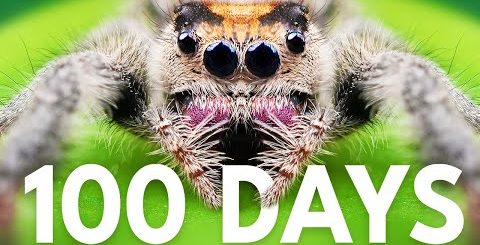True Facts: Hippopotamus
Check out Curiosity Stream! Go to https://curiositystream.com/zefrank23 and use code: zefrank23 to get 25% off when you sign up!
merch: https://ze-true-store.myshopify.com/
patreon: https://www.patreon.com/truefacts
classical music: https://soundcloud.com/querflote/5-audio-track-1
sponsor music: https://incompetech.com/
Special Thanks to:
Dr Eduardo J Fernandez, University of Adelaide
Dr Jonas Schoelynck, University of Antwerp
Dr Julio de Castro
Dr Frank Fish, West Chester University
Dr Maria Maust-Mohl, Manhattan College
Dr Christopher Dutton, University of Florida
Dr Joseph Dudley, University of Alaska
Dr Todd McWhorter, University of Adelaide
Dr Victoria Inman, NSW Dept. of Planning and Environment
Dr Philip Gingerich, University of Michigan
Dr Rebecca Lewison, San Diego State University
Peter Geraerdts
https://www.youtube.com/watch?v=n922pMUlgic, https://www.youtube.com/watch?v=FOOaF2vEoKs
Lex Hollmann @LexHollmann
Johan Vermeulen | The Nature Box @thenatureboxfilms
Amos Kaggwa https://www.instagram.com/amostheguide/
San Diego Zoo Wildlife Alliance @SanDiegoZoo
ZSL Whipsnade Zoo @ZslOrg1826
Prof. Gordon T. Taylor
PapaArtzzi*- Art Ryan, https://www.instagram.com/artryan4674/
Latest Sightings @Latestsightings
Newsflare
Shutterstock
Pond5
iStock by Getty Images
Envato Elements
Citations
Barklow, William E. Amphibious communication with sound in hippos, Hippopotamus amphibius, Animal Behaviour, Volume 68, Issue 5, 2004, Pages 1125-1132, ISSN 0003-3472, https://doi.org/10.1016/j.anbehav.2003.10.034.
Blowers, Tracy, “Social Grouping Behaviors Of Captive Female Hippopotamus Amphibius” (2008). Electronic Theses and Dissertations. 3459.
https://stars.library.ucf.edu/etd/3459
Coughlin, Brittany L. , Frank E. Fish, Hippopotamus Underwater Locomotion: Reduced-Gravity Movements for a Massive Mammal, Journal of Mammalogy, Volume 90, Issue 3, 2 June 2009, Pages 675–679, https://doi.org/10.1644/08-MAMM-A-279R.1
Dudley, J.P., Hang’Ombe, B.M., Leendertz, F.H., Dorward, L.J., de Castro, J., Subalusky, A.L. and Clauss, M. (2016), Carnivory by hippos and ecology of anthrax. Mammal Review, 46: 191-203. https://doi.org/10.1111/mam.12056
Dutton, C.L., Subalusky, A.L., Sanchez, A. et al. The meta-gut: community coalescence of animal gut and environmental microbiomes. Sci Rep 11, 23117 (2021). https://doi.org/10.1038/s41598-021-02349-1
Gatesy J, Hayashi C, Cronin MA, Arctander P. Evidence from milk casein genes that cetaceans are close relatives of hippopotamid artiodactyls. Mol Biol Evol. 1996 Sep;13(7):954-63. doi: 10.1093/oxfordjournals.molbev.a025663. PMID: 8752004.
Geisler, J., Theodor, J. Hippopotamus and whale phylogeny. Nature 458, E1–E4 (2009). https://doi.org/10.1038/nature07776
Gingerich PD, Haq Mu, Zalmout IS, Khan IH, Malkani MS. Origin of whales from early artiodactyls: hands and feet of Eocene Protocetidae from Pakistan. Science. 2001 Sep 21;293(5538):2239-42. doi: 10.1126/science.1063902. Epub 2001 Sep 19. PMID: 11567134.
Graeme, Shannon, Sadler Phoebe, Smith Joanna, Roylance-Casson Eleanor and Cordes Line S. 2021Contrasting selection pressure on body and weapon size in a polygynous megaherbivoreBiol. Lett.172021036820210368, http://doi.org/10.1098/rsbl.2021.0368
Gray NM, Kainec K, Madar S, Tomko L, Wolfe S. Sink or swim? Bone density as a mechanism for buoyancy control in early cetaceans. Anat Rec (Hoboken). 2007 Jun;290(6):638-53. doi: 10.1002/ar.20533. PMID: 17516430.
Inman VL, Kingsford RT, Chase MJ, Leggett KEA (2019) Drone-based effective counting and ageing of hippopotamus (Hippopotamus amphibius) in the Okavango Delta in Botswana. PLoS ONE 14(12): e0219652. https://doi.org/10.1371/journal.pone.0219652.
McCauley, D. J., T. E. Dawson, M. E. Power, J. C. Finlay, M. Ogada, D. B. Gower, K. Caylor, W. D. Nyingi, J. M. Githaiga, J. Nyunja, F. H. Joyce, R. L. Lewison, and J. S. Brashares. 2015. Carbon stable isotopes suggest that hippopotamus-vectored nutrients subsidize aquatic consumers in an East African river. Ecosphere 6(4):52. http://dx.doi.org/10.1890/ES14-00514.1
Maust-Mohl, M., Reiss, D. and Reidenberg, J.S. (2019), A Comparison of Common Hippopotamus (Artiodactyla) and Mysticete (Cetacea) Nostrils: An Open and Shut Case. Anat Rec, 302: 693-702. https://doi.org/10.1002/ar.24032
Maust-Mohl, M., Soltis, J., & Reiss, D. (2018). Underwater click train production by the hippopotamus (Hippopotamus amphibius) suggests an echo-ranging function, Behaviour, 155(2-3), 231-251. doi: https://doi.org/10.1163/1568539X-00003484
Saikawa, Y., Hashimoto, K., Nakata, M. et al. The red sweat of the hippopotamus. Nature 429, 363 (2004). https://doi.org/10.1038/429363a
Sulman J R, Madelyn G C, Irina A K. Correlation of Bone Density in Aquatic and Semiaquatic Animals to Ecological and Dietary Specializations. Open Acc Res Anatomy. 2(3). OARA.000537.2020.
DOI: 10.31031/OARA.2020.02.000537








Check out Curiosity Stream! Go to https://curiositystream.com/zefrank23 and use code: zefrank23 to get 25% off when you sign up!
You need to do something with beards…
Do rhinos next please
can you give a warning before mentions of shit soup next time please?
I was eating……Im definitely not anymore
Curiosity Stream ad but not also a Nebula creator feels weird. Wanna watch bebbe content over there as well.
Is this about the backwards oppih?
I remember reading that hippos were the one animal Steve Irwin refused to get near to. That’s how unpredictably violent they are.
@Ivyvine.citrus. I’ve had parrots they are menaces lol
@suzi q I forgot about straight through the heart, Dio is far more respectable! I always think about holy diver when I think of Dio. 🙂
@StillMe It was not small. I mean compared to a Hippo it probably was but Stingray are not small.
@JorgensZelda I’d heard that the hippos there had been ‘removed’.
I was thinking of Shot through the heart. I always thought it was by Poison but the interwebs say its Bon Jovi.
I absolutely love Ze’s little “kill me” whenever he makes a pun
@Josh Young Once, in *this* video. It’s been a running joke in his vids for years.
@Odin Satanas pretty sure you answered it yourself. OBVIOUS factoid.
He made a ton of puns and only said “kill me” once, what are you talking about lmao
The best part is that that is mixed with him being really proud of his stupid puns 1 minute later.
Same ironically it killed me 🤣🤣
After being blessed with the “oppih”, we finally get a True Facts about its closest relative and one of my favorite animals. And as always, Ze Frank doesn’t disappoint.
@Josh Young ,
YT said it was 2 years ago. Here’s the link:
https://youtu.be/v5SSnQBtaq4
@Arcanine-Espeon cause “the last video that wasn’t made 3 years ago” is doing absolutely nothing for me haha
@Arcanine-Espeon could you…post…a…link? lol
Oppih was also made on April Fools, IIRC. And this one drops the day before.
@Arcanine-Espeon Thank you! My mind had filed it under “oppai” for how he pronounced it, and if you studied Japanese or “studied” anime you’d know why that is disgustifunny.
I was blessed to grow up in a place where I could see or hear them every day. They are fascinating creatures
Some additional information on hippo’s phylogeny:
Not only are whales their closest living relatives, they are also more closely related to ruminants such as bovines, sheep, deer, and giraffes, than they are related to pigs.
Also something I love is that the clade that includes both cetaceans and hippos is called Whippomorpha.
Another fun fact is that the dolphin’s closest relative are actually cows. That’s right, nearly all bovine species evolved from dolphins. I guess they figured that eating fish and swimming all day was too much work, so they decided to ditch the fins, crawl up on the land and start eating the grass. As so, we can all look around and see cows as just lazy dolphins. Eat beef! Dolphin meat seasoned by evolution!
@Jenny John What are you comparing it to? Modern metal isn’t even metal anymore that’s why you need ten-thousand genres to describe it. If you are comparing it to the nineties though I would have to agree with you. I am a child of the eighties so I was actually there and at the prime age to enjoy it.
Music before 2000 > Music after the year 2000
@Rasputin Pretty much all 80s metal bands were bad… but not in a good way… :O
Whippomorpha sounds like a bad 80s metal band. 😂
@Dessa you’re right, whales still have hands in their flippers.
The OP list has even and odd toed ungulates. (Confused me for a moment too!)
Telling the hippopotamisses from the hippopotamisters broke me. Great job. Love this channel and wish you could narrate all sorts of things.
I’m almost done with the video and i can’t stop giggling about that one I’m in tears
@Janelle Woodall YES!
Likes the video immediately after that one lol
Ze Frank did a Friskies commercial called Dear Kitten years ago. That is how I discovered him. It was the first video I gave a like to and still watch it to this day.
That one was fantastic.
We’re reaching ‘Dad Joke’ critical mass.
And I’m here for it.
“it’s a sad thing, but a true thing”
Might as well be life’s motto
The world is cruel, but also very beautiful.
@Patte Commercialism is the most powerful and dangerous animal..
@xenidus I hope so too, he’s one of my favorite humans.
And I hope yours is going good too 😊
Zfranks voice was incredibly empathetic and heartfelt for that line. Legit brought a tear to my eye. Hope he’s doing okay in life!
The phrase “science hippo” was everything I didn’t know I needed
Wait till you hear about the coacaine hippos
You can actually thank one of the Patreons for that! They suggested it in one of his drafts.
@Mike Oxmall They’re all combat hippos. IIRC, they kill more humans than anything that’s not a human or a mosquito.
@Mike Oxmall: President Hippo sounds nice.
@Mike Oxmall how else would they afford these liner cruises they take? A working hippo is a Happy Hippo.